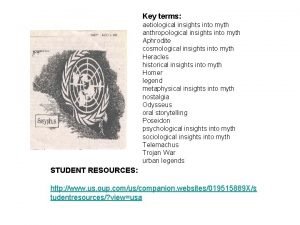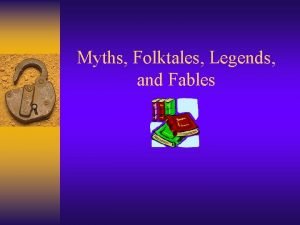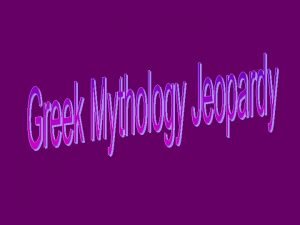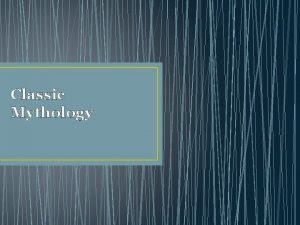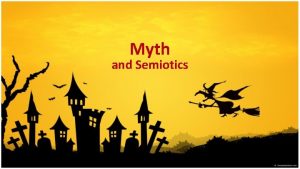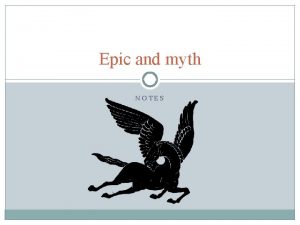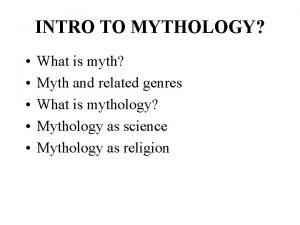MYTHOLOGY WHAT IS MYTHOLOGY A myth is a






- Slides: 6

MYTHOLOGY

WHAT IS MYTHOLOGY? A myth is a story based on tradition or legend, which has a deep symbolic meaning. A myth 'conveys a truth' to those who tell it and hear it, rather than necessarily recording a true event. Although some myths can be accounts of actual events, they have become transformed by symbolic meaning or shifted in time or place. Myths are often used to explain universal and local beginnings and involve supernatural beings. The great power of the meaning of these stories, to the culture in which they developed, is a major reason why they survive as long as they do - sometimes for thousands of years.

WHY TEACH MYTHS? v Equips students to understand allusions in poetry and literature v To learn about ancient cultures v As inspiration for the arts v To teach values and morals v For entertainment v Provide a safe place for young children to experience fear, hope and magic.

STRATEGIES FOR TEACHING MYTHS v Begin by reading aloud two or three myths such as "Theseus and the Minotaur" and "Pegasus and Bellerephon. " In both stories a hero must wage a battle against a powerful fantastic creature. Learn these first myths together as a class by reading and comparing several versions of the same story. Then ask your students to work in pairs or small groups. Each pair or group may be assigned particular myths, or allowed to explore the available books and choose the myths they would like to read. Encourage students to read two or three different versions of the same myths before completing an activity. Understanding the myths very well will make their learning experience that much richer. As the students continue reading myths, introduce a new activity every few days, and enjoy it together as a class.

OTHER STRATEGIES FOR TEACHING MYTHS v Illustrate their own versions of the myths v Questions to briefly assess students existing knowledge of mythology v Compare similar myths from different cultures and determine the purpose behind the differences

VIDEO v https: //www. youtube. com/watch? v=y 0 wnv. DUs. B 7 Q
